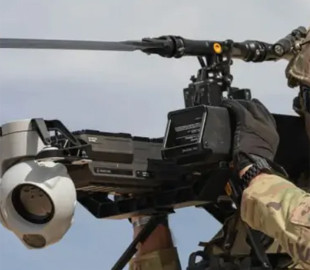According to US Army Major General Randy George, the war in Ukraine demonstrated the value of small, easy-to-hit UAVs on the battlefield.
A new batch of unmanned aerial vehicles will be added to the Pentagon's Replicator program, at least one of which is used by the Defense Forces of Ukraine in the war against the Russian Federation. About this writes Defense One with reference to the statement of the US Deputy Secretary of Defense Kathleen Hicks.
As noted in the publication, the Replicator defense program is aimed at accelerating the deployment of cheap autonomous systems. According to the Pentagon, the project is planned to be supplemented with air and sea drones, as well as integrated software tools that will increase the autonomy and stability of other systems.
Among the drones that are planned to be included in the Replicator, the Ghost-X from Anduril Industries, the Performance Drone Works C-100, as well as secret drones that include “low-cost long-range strike devices and maritime unmanned systems” are mentioned.
200% Deposit Bonus up to €3,000 180% First Deposit Bonus up to $20,000As noted in the publication, the Ghost-X and C-100 are already part of the program of small unmanned aerial vehicles at the company level of the US Army. In addition, Ghost-X drones have been used by the Ukrainian Armed Forces since the first weeks of the full-scale war in Ukraine.
“Ukraine has demonstrated the value of small, easily impressive drones on the battlefield,” — emphasized US Army Major General Randy George.
The Ghost-X's encounter with advanced Russian EW assets has reportedly helped Anduril develop countermeasures that can be used against China. For example, according to the publication's source, the company has developed peerless networks that allow swarms of UAVs to exchange data even in conditions of strong interference. The drones' high level of autonomy also helps them avoid being affected by EW and interceptor missiles.
“Let's say I'm transmitting a message and suddenly the Russians launch an EW. The drone can say, 'Okay, I expected that. I'm not even going to go to the reserve positions. I will fly here. I'll go where their muffler is — which I can triangulate — won't affect my connection anymore.” So you get all these networks that physically change their geometry to be resistant to interference,” — explained the interlocutor of the publication.

